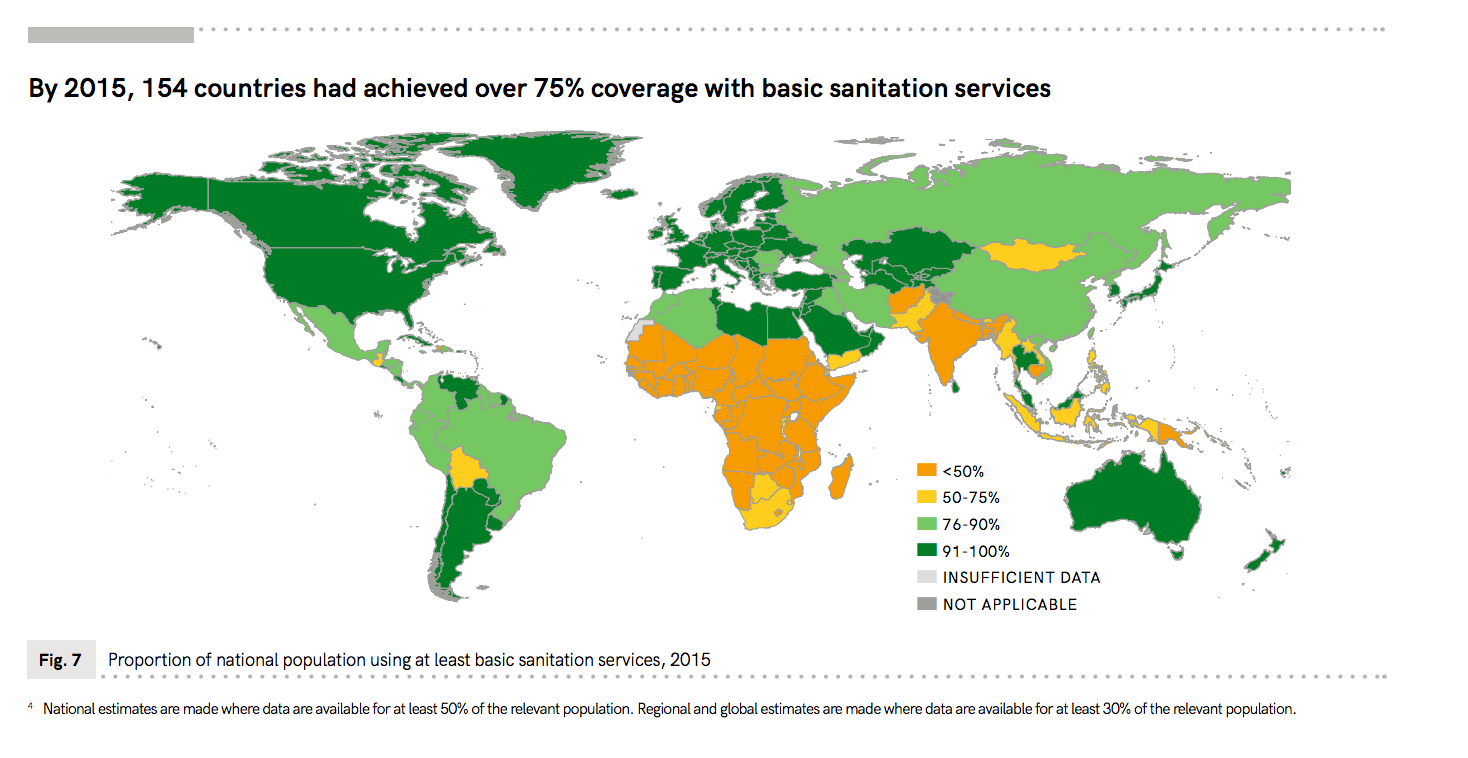Where to find the nearest toilet is a matter of convenience in some of the world. But for millions of people it is a matter of profound consequence to their health and well being. A just-released report from UNICEF and the World Health Organization offers new data on the availability of sanitation services around the world and the prevalence of the dangerous practice of “open defecation;” that is, not even using a rudimentary toilet.

Water and sanitation are inextricably linked and the report finds that 2.1 billion people do not have safe drinking water at home, including “263 million people who have to spend over 30 minutes per trip collecting water from sources outside the home, and 159 million who still drink untreated water from surface water sources, such as streams or lakes.”
On sanitation, the number of people in need of better toilets is exceedingly high. From the report.
Of the 4.5 billion people who do not have safely managed sanitation, 2.3 billion still do not have basic sanitation services. This includes 600 million people who share a toilet or latrine with other households, and 892 million people – mostly in rural areas – who defecate in the open. Due to population growth, open defecation is increasing in sub-Saharan Africa and Oceania.
Lack of access to proper toilets leads to all sorts of health problems, including contaminated drinking water. Every year 361 000 children under 5 years die due to diarrhea linked to poor sanitation and contaminated water. It is a major killer of children around the world.
The Sustainable Development Goals call for universal access to safe drinking water and suitable sanitation services–and an end to open defecation– by 2030. This new report shows that humanity still has far to go to make those goals a reality around the world.
